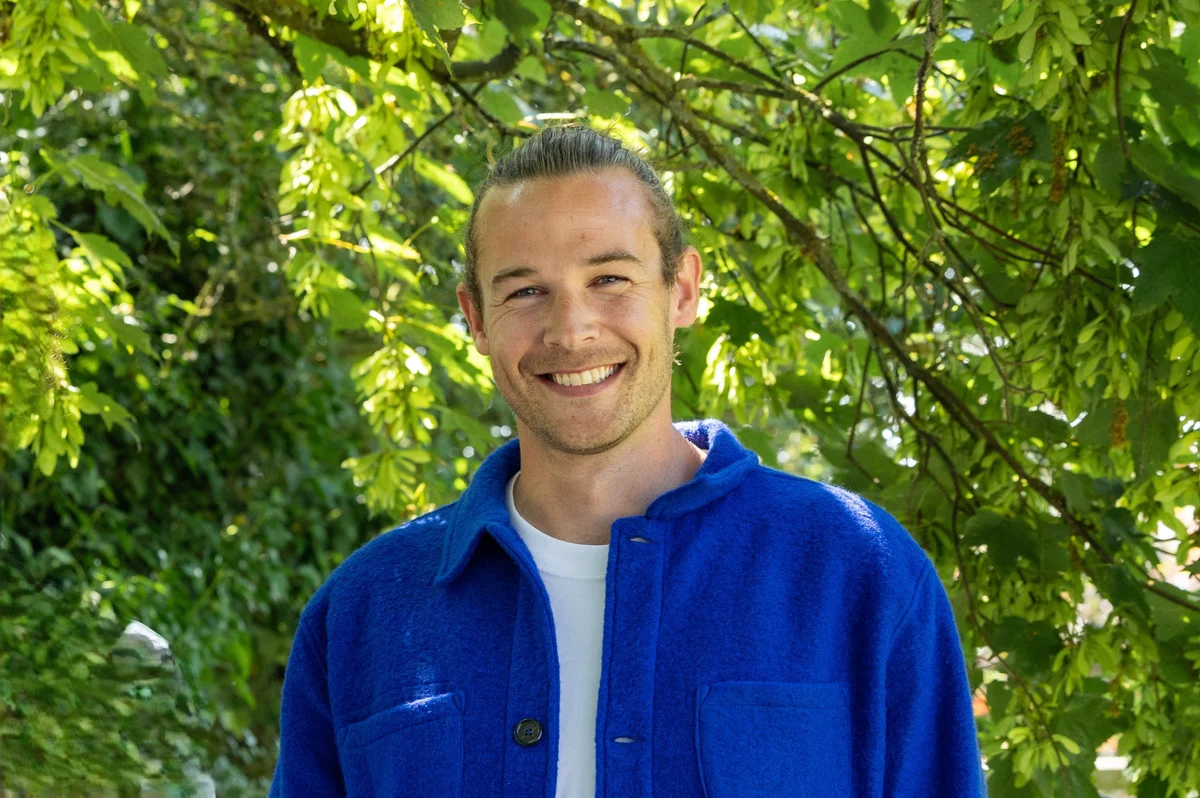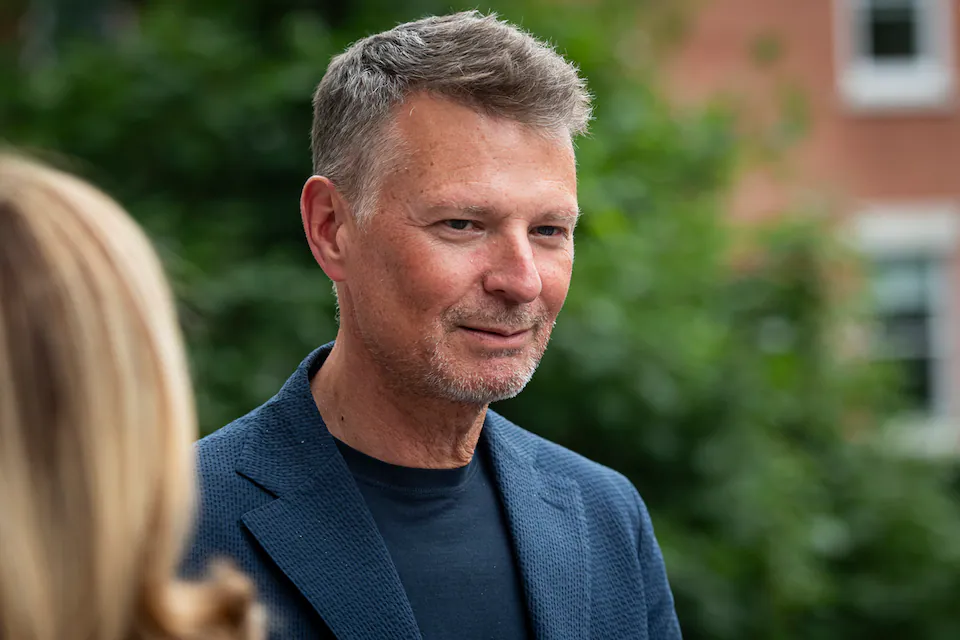Copyright standard

Rowing probably isn’t good for your back. But it could be good for your business. Or so goes the founder story of Finn Stevenson. The 33-year-old was a professional rower for three years up to 2018, competing out of Henley’s Leander Club. He moved on and worked at robotics unicorn CMR Surgical, when Stevenson developed back pain “and I realised that, outside of elite sport, access to physiotherapy was either prohibitively expensive or involved months of waiting. “I wanted to find a way to bring that level of access to everyone, which became the catalyst for Flok: using technology to make exceptional care available at scale.” Stevenson met Ric da Silva, who became his co-founder at AI physio, Flok, in 2022, whilst both worked at CMR Surgical. “Ric was one of their first engineering hires. I was one of the first commercial hires and set up the company’s first surgical programmes in the NHS. Between us we saw the journey from seed to $3 billion valuation and 1000 people - we learned a lot.” The duo decided to work on digital physiotherapy that went beyond symptom checkers or basic exercises. “We wanted to build a fully autonomous AI clinic that could safely manage a patient’s entire treatment pathway. That meant tackling tough technology and regulatory challenges - including developing a new domain-specific programming language to encode clinical reasoning, and working closely with UK regulatory frameworks [including health regulators CQC and MHRA] to get approved certification.” Flok works as patients make video calls with Flok's AI physiotherapist, Kirsty. “She's a real human physiotherapist who joined our team in 2023. Rather than using an emotionless avatar, our AI manipulates video footage of Kirsty in real-time to respond to what our patients are saying and doing. This creates a more engaging and credible experience, with real rapport and emotion,” Stevenson says, “but it does lead to some funny moments when people visit our office and are shocked to discover that Kirsty is ‘real’.” Flok raised £3.2 million in pre-seed funding led by Eka Ventures, with angels including Indeed.com founder Paul Forster; it also scooped an Innovate UK Smart Grant to support scaling. After regulatory approvals in 2023, the duo deployed pilot studies “at increasing levels of scale” in 2024. When Flok secured Class IIa Medical Device approval in the UK and EU, it was the first time AI was approved to triage and treat medical issues without human intervention. As of this year, the firm - which is based on the outskirts of Cambridge - is revenue-generating, working with the NHS across the UK and reaching three million patients so far. An initial focus on back pain has now expanded to hip and knee pain, and women’s pelvic health conditions. Sceptics will question whether AI, with zero human intervention, can be a treating medic. But Stevenson responds that Flok’s trials show that most patients prefer the convenience of on-demand appointments, and 80% of users found the service to be “equivalent or better” than traditional face-to-face physiotherapy. “For many [musculoskeletal] conditions, accessing effective treatment early and frequently enough matters more than where that treatment takes place,” Stevenson adds. In contrast to Flok’s own remote work, the 21-strong team behind it works in-person at least four days a week: “it’s key to our culture and pace,” Stevenson adds. “By giving people same-day access and a clear, constantly personalised treatment pathway, we help them recover faster - and clinicians can focus on cases that require hands-on care. It’s a long game though, and we’re still just warming up.” Getting co-founder dynamics right can be key to a company's success, says Adam French, of early-stage VC Antler, who here shares his tips for a smooth partnership. 1. Start with values, not just skills Understand why each of you is founding a company. Is it about changing the world, achieving financial independence, or proving yourself? Misaligned motivations are the hidden landmines in co-founder relationships. 2. Embrace complementary weaknesses The best founding teams aren't mirror images. Map out 10 key startup capabilities and rate yourselves honestly. Where one founder scores 2/10, the other should be 8/10. Complementary spikes create a complete team, but overlapping strengths create ego battles. 3. Ask uncomfortable questions early How many hours per week are you willing to work? What's the worst interpersonal conflict you've dealt with? How did you handle it? These awkward conversations are cheaper than a messy breakup later. 4. Date before you marry Start with coffee chats about motivations, then collaborative projects to test working chemistry. Finally stress-test through idea development and conflict scenarios. 5. Build vulnerability into the process Adapt the famous "36 Questions to Fall in Love" for your co-founder relationship. Go beyond surface-level chat. Questions like "If we had to dissolve this business tomorrow, what would you regret not having done together?" reveal whether you can be genuinely open with each other. 6. Spot warning signs before they become fatal Watch for: avoiding difficult conversations about equity or roles; misaligned time commitments; incompatible working styles or one person dominating decisions. 7. Name the tension When co-founder conflict emerges, don't let it fester. Schedule a conversation away from the office. Name what you're observing: "I feel like we're not communicating as openly as we used to." Getting it on the table is half the battle. 8. Return to your founding principles What problem were you both passionate about solving? Conflicts often arise not because you've changed fundamentally, but because you've drifted into reactive mode and lost sight of your original shared vision. 9. Bring in a mediator (before it's too late) Don't wait until the relationship is unsalvageable. Involve a trusted advisor when tensions are high but resolution still seems possible. An outside perspective can help you see patterns that have become too emotionally charged to navigate alone. 10. Know when to cut losses gracefully Sometimes, despite best efforts, it doesn't work. If the relationship is actively harming the business, it's better to part ways professionally than to drag it out. A clean break with mutual respect is infinitely better than a toxic environment that kills the company.



